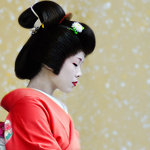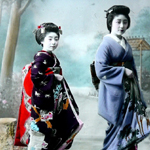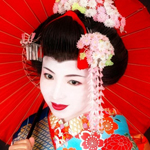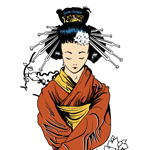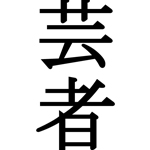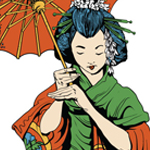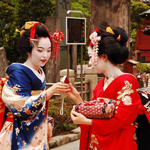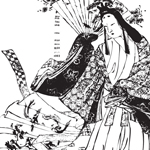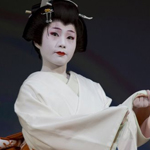
The Japanese word geisha means 'person of the arts' and a true geisha is said to be a living work of art. To the Westerner, she is a figure of mystery and intrigue. Her white mask-like makeup hides emotions, her traditional black wig is dressed with tinkling bells, and her small body is wrapped tightly in kimonos of breathtaking color and exquisite design, bound in the middle with the wide sash or obi. In her thonged sandals, her white-socked feet take tiny steps. In her hand, she holds a fan, the complex and intricate use of which speaks a language of its own. The color red was also a trademark for the geisha, and kimonos were lined with scarlet silk. It was believed that red symbolized fertility, and that wearing crimson underwear was essential for healthy reproductive organs. Lipstick -- always red -- was made from crimson flower petals.
Movies, books, and comics about geisha heroines intrigue and fascinate the western imagination; the film Sayonara, starring Marlon Brando, for instance, and the novel, Memoirs of a Geisha, or Puccini, in his opera, Madame Butterfly, all featured a 'geisha' character in the leading role. Puccini took artistic license in doing so, since no girl of fifteen could be a full-fledged geisha. Although the opera became a great favorite in the West, it was never popular in Japan.
Geisha tattoos find their way into designs on sleeves and torsos of both men and women. Not so much in Japan, though, where the geisha and her art are seen as tourist attractions, or as relics of the past.
See also: Japanese Tattoo Designs, Japanese Tattoo Index


